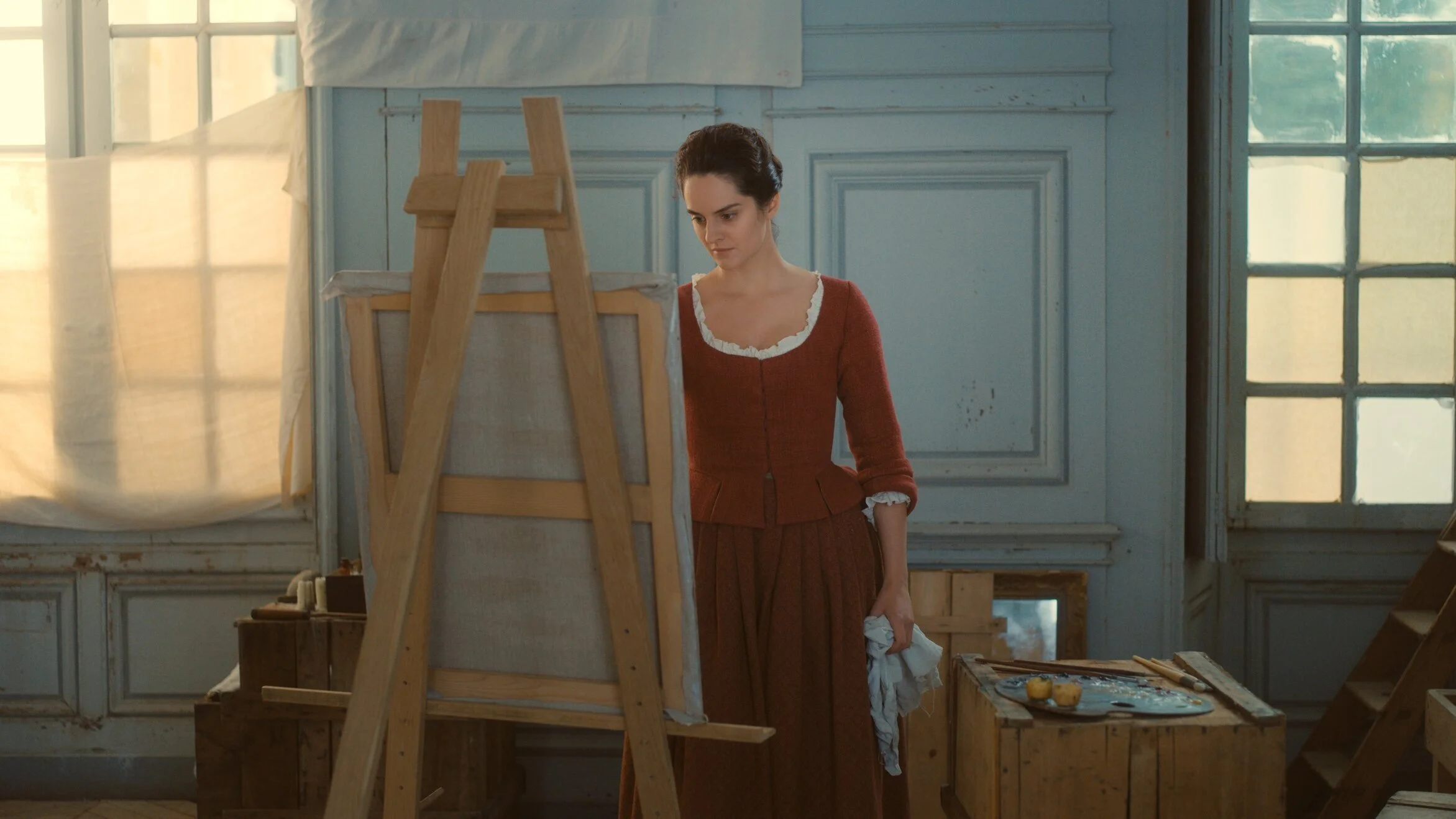Portrait of a Lady on Fire
A late 18th century love story that speaks of the constraints of that time.
An incendiary woman: Noémie Merlant
There is a great deal to admire in this latest work from the French writer-director Céline Sciamma: indeed, it is probably her finest achievement to date. Although it is her fourth feature film, it is her first period piece and it marks too the first time that her work has placed an adult lesbian relationship at its centre. Lesbianism was not entirely excluded from her earlier work but her focus then was on young females, some pre-pubescent. Consequently, those films offered sensitive portrayals of youngsters not yet conscious of their sexuality even if there were pointers beneath the surface as to what form their sexuality might eventually take. Now, in contrast, we have a period tale - it takes place in Brittany in the late 18th century - in which a love affair between two women is so much to the fore that it becomes the very heart of the film.
Noémie Merlant (a new name to me) plays a painter named Marianne who is hired by a Countess (Valeria Golino) to make a portrait of her daughter, Héloïse (Adèle Haenel). Héloïse has been schooled in a convent but, following the death of her older sister, has been brought home as a potential bride for a wealthy Milanese - indeed the portrait required is for the proposed bridegroom. One attempt has already been made to get a portrait done but it has been frustrated by hostility on the part of Héloïse. Consequently, Marianne is introduced into the household as a companion who can observe Héloïse and then make drawings and create a portrait in secret. As it turns out the two women chime and once the painting has been completed Marianne insists that she be allowed to make known her true role. At that point Héloïse dismisses the work done but has been won over sufficiently to agree to pose for a more satisfactory and more truthful portrait.
Both Merlant and Haenel are excellent (the casting could not be better) and in her writing capacity Sciamma creates a wholly convincing study of two contrasted women finding a rapport which only then starts to develop into a recognition of mutual love. There is also a subsidiary plot line concerning the servant in the house, Sophie played by Luàna Bajrami, which again illustrates the lot of women at that time. Unhurried but with fine production values (aptly enough Portrait of a Lady on Fire often contains images which themselves have a painterly quality), the film also illustrates Sciamma's awareness of how music can be made to contribute. For much of the time there is no music score and none feels needed, but two instances occur when music plays a significant part. One is in an exterior scene in which singing and clapping by local women seem to symbolise the emotions of Marianne and Héloïse as they come into the open although I learnt later that the untranslated words refer to the inability to escape. The other lies in the use of Vivaldi's The Four Seasons which at the close of the film provides the only full orchestral sounds heard but relies for its impact on our recognition of the same music having been touched on earlier when played by Marianne on the harpsichord.
There are moments when the symbolism is expressed visually and here the stylisation briefly inserted can feel as though it belongs to a different film. It is also the case that in the second half there is a danger of scenes coming to feel a shade repetitive, but if these are flaws they are minor. Despite the impact of the final scene, it could be argued that the film's finest moment is that which concludes the flashback which has made up almost the whole of the picture. This scene has been prepared for twice over: through earlier moments that incorporate a kind of hallucinatory vision and through talk about the tale of Orpheus and Eurydice. It is a brief but wonderfully expressive emotional climax and arguably even more effective than that final sequence which draws on Vivaldi.
Original title: Portrait de la jeune fille en feu.
MANSEL STIMPSON
Cast: Noémie Merlant, Adèle Haenel, Luàna Bajrami, Valeria Golino.
Dir Céline Sciamma, Pro Bénédicte Couvreur, Screenplay Céline Sciamma, Ph Claire Mathon, Art Dir Thomas Grezaud, Ed Julien Lacheray, Music Para One and Arthur Simonini, Costumes Dorothée Guiraud.
Lilies Films/ARTE France Cinema/Hold-Up Films & Productions/Canal+/Ciné+-Curzon.
122 mins. France. 2019. Rel: 28 February 2020. Available on Curzon Home Cinema. Cert. 15.


